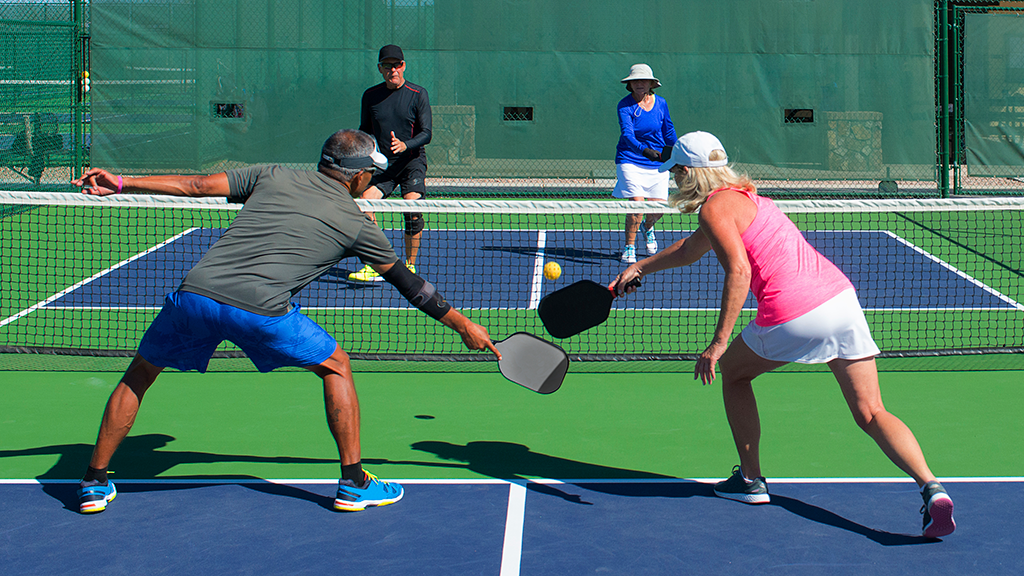
Must-have or burden?
While some neighborhoods like to boast about their pickleball courts, other neighborhoods aren’t so keen to brag about them due to homeowner complaints about noise. Pickleball has seen a tremendous rise in popularity, with participation increasing 14.8% from 2020 to 2021 and also increasing 21.3% from 2019 to 2020. Approximately 4.8 million people play in the U.S., according to USA Pickleball. Architectural Digest reported that pickleball has replaced golf as the “hottest sports amenity in high-end real estate developments today.”
Pickleball is similar to tennis in that players use paddles to try and hit a ball. One difference between pickleball and tennis is that tennis players use a soft ball and a racket made of strings, while pickleball players use a small hard racket and a plastic ball, which ultimately makes it the noisier sport of the two.
So, what’s the problem with this sport? The thwack, thwack, thwack of landing plastic balls is driving some nearby neighbors nuts. CNN reported that a Falmouth, Massachusetts homeowner sold his house after pickleball courts were built 350 feet from his home because he could not tolerate the noise. Neighbors filed a lawsuit against the town’s zoning board of appeals and won a temporary injunction and the courts remain closed.
In Chestnut Hill, the city limited hours for pickleball and now plans to build more courts away from residential properties after numerous complaints from local consumers, the Philadelphia Inquirer reported. The town is also accepting funds to help soundproof the already built courts.
A 2018 Spendiarian & Willis Acoustics & Noise Control LLC report said that pickleball courts built within 350 feet of residential homes need some kind of sound reduction and those built within 150 feet need “careful abatement design to avoid complaints.” This generally means adding walls to help reduce sounds.
Homebuyers should take into consideration their proximity to a pickleball court if they think the noise will disrupt their daily living. The Inquirer reported that “ambient background noise in most cities ranges from 60 to 70 decibels, though quiet neighborhoods register 45 to 50 decibels. The pickleball neighbors say they’ve measured 80-to-90-decibel days on the courts.” Or perhaps living nearby will encourage them to pick up their own paddle and join a game.
Topics
Member Discussion
Recent Articles
-
New Cumberland Valley Neighborhood Preserves Nature, Plans for 1,000 Homes
- May 2, 2025
- 2 min. read
Grange was transformed from a century-old dairy farm into a modern neighborhood that meets the needs for multigenerational living and various other lifestyles.
-
AANHPI Realtors® Guide Buyers and Sellers With Confidence
- May 1, 2025
- 6 min. read
In honor of Asian American, Native Hawaiian and Pacific Islander Heritage Month, PAR recognizes several AANHPI Realtors® who are making a difference through their work and their commitment to their communities.
-
Several Philly Suburbs Make Niche’s Best Places to Live
- April 30, 2025
- 3 min. read
Here are the Philly suburbs that made Niche’s top 50 Best Places to Live in America, plus one other Pennsylvania location that made the top 100.
Daily Emails
You’ll be the first to know about real estate trends and various legal happenings. Stay up-to-date by subscribing to JustListed.



